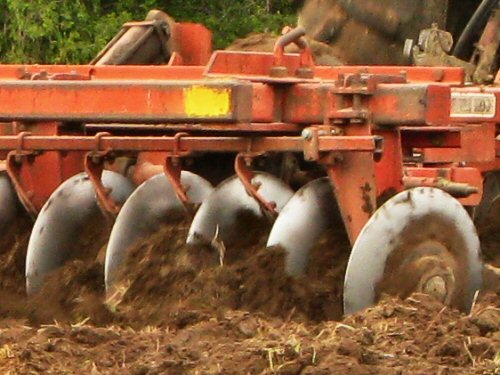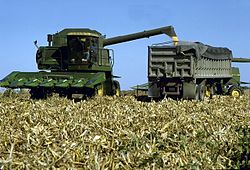
The Huey came equipped with windshield wipers. We were told NEVER to use them though. To save weight the Huey windscreen was made out of plexiglass until the Army finally decided to upgrade to glass which added an extra 40 pounds to the aircraft's basic weight. A single windscreen was held in place with something like 120 rivets I was told. (I never counted them for myself). If you used the windshield wipers they would glaze the plexiglass windscreen causing the aircraft to be circle red X'd from night flights due to the now hampered visibility from the scratches the windshield wipers caused. Flying with a glazed windscreen during the day wasn't very pleasant either. Your crew chief would have to drill out each of the 120 rivets individually to remove the now defective windshield so it could be replaced. It was not a pleasant job and you would be forever on his dung list if you were the one who caused the need for replacement through windshield wiper usage. So, the windshield wipers were for ornamentation only and NEVER to be used no matter what!
Crazy Harry (introduced in "The Road to Korea") gave me my 1st orientation flight in country. He was tagged w/ crazy for behaviors not involving how he flew. He was the units buffer zone check pilot and Cobra Gun Ship instructor pilot. In the aircraft he was a consummate professional and anything but crazy unless a genuine operational necessity dictated a real need for above and beyond.
One of the stories that helped Harry get tagged crazy involved his day off in Vietnam. Since he didn't have to fly he decided he would go out on patrol with a LRP team. (LRP = Long Range Patrol pronounced Lerp). The big deal among these guys was who could be the first one out of the aircraft. Harry had made up his mind that he would be first. On final approach to the LZ (Landing Zone) Harry spied a hugh mud hole. At about 50 feet he figured he could make it, so he jumped.
As soon as Harry was out the door the aircraft inserting the LRP team started taking fire, so they did a go around. There's Harry on the ground all alone in a hot LZ. He's just an aviator and not a real grunt like the LRPs he thought he'd spend his off day with. A short heated conversation pursued in the aircraft:
"Stevenson fell out!"
"No he didn't! He jumped! I saw him."
Anyhow the result was the same. Harry was on the ground all alone in a hot LZ. I don't know if that is the tale that helped him first get tagged with "Crazy", but it is certainly one that reinforced the nickname.
South Korea is separated from Communist North Korea by the DMZ (Demilitarized Zone) which is roughly along the 38th parallel of latitude across the Korean peninsula. Just south of the DMZ is a thin strip of land called the Buffer Zone. It took special training to be qualified to fly in the Buffer Zone. A BZ flight also required a BZ flight plan and an authorization number to enter the BZ. South of the Buffer Zone was a wider strip of land divided into three areas, TAC Zone "A", "B", and "C". These also required orientation and training to fly in, but the training was not nearly as extensive as what was required to fly in the BZ and neither did you need an authorization number to enter a TAC Zone.
Our unit, the 128th Assault Helicopter Company was stationed in TAC Zone "A" just to the north of Seoul Korea. My first orientation flight was of TAC "A" and the southern boundary of the BZ that bordered TAC "A". Airfields and helipads were designated with numbers in Korea. Triple Deuce Valley was a major portion of it because 222 airfield was a key landmark in the valley. On the orientation flight Harry pointed out numerous airfields, helipads, and small villages that had some significance. I was mostly just along for the ride enjoying the sights and not too concerned with mastering any of this stuff just yet.
A few hours after the flight back in our company's officer's lounge Harry was talking about different stuff and places, many of which he had just shown me. He would look at me and say, "You know where that's at. Remember I showed you today." I didn't have a clue. Harry was extremely skilled in how he did it. He didn't really embarrassed me, but his manner impressed upon me how important it was to became master of your AO (Area of Operations) if you wanted to be useful and accepted as valuable team player. I began putting the time in that was necessary for mastery of the AO studying my personal flight map of Korea. If and when Harry or anyone else would ask me if I knew where such and such was I would no longer ever again be clueless. That mastery of our AO would payoff many times over the two years I spent in South Korea.
While I was in Korea the 128th was stationed at A210 an airfield located in downtown Uijeongbu located at the top of the map shown. A common flight back then was between Yongsan and Uijeongbu.
I was ferrying an aircraft one day from Yongsan to Uijeongbu when I encountered a pretty significant cloudburst about where the green marker is on the map. Since it was a ferry flight only the aircraft's crew chief and I was onboard. I was in the right seat and he was in the left seat. Ahead of us the valley narrowed and the power lines crossed. The large volume of heavy rain beating against the windscreen caused my forward visibility to go to practically zero. Out of my side window I could see probably a quarter of a mile only. If I could pickup the small road that led to the power substation we could cross safely.
We continued to press ahead toward Uijeongbu when all of a sudden the windshield wipers came on. There is no way I would have ever turned them on after what I had been told no matter what. But, the crew chief was in the left seat with a front row view of what I was dealing with. If the windscreen got ruined, he would be the one that would have to hand drill each of the 120 rivets to replace the damaged windscreen. I guess the lack of forward visibility bothered him enough that he didn't care.
Immediately after the wipers came on the crew chief said, "Does that help Sir?"
I said, "yeah, sure does".
And they did help quite a bit. I could now see out the front almost as good as I could see out the side window. We easily picked up the small road that led to the substation and crossed the wires with ease. The airfield came into view soon after crossing the wires and I began to slowdown for an approach and landing. Once I began to slowdown I noticed the volume of water contacting the windscreen slacking off. I reached up and flipped the windshield wipers off.
After landing we hover taxied to parking. A small group of pilots that had been in the Operations building stepped outside and watched us park. They all knew I had just flown through a pretty significant rain shower. After shutting down and climbing out while they were all still watching, I got down and kissed the ground.
There was absolutely no damage done to the windscreen. After that I used the wipers whenever I considered the conditions warranted them. I never did ruin a windscreen. I shared my experience with other pilots and some of them also began to use the wipers in heavy rain. The secret was starting with a good clean windscreen and monitoring the volume of water contacting the windscreen. When the volume of water slacked up you had to be ready to turn the wipers off.
One problem with spreading info like this is that not everyone will be as diligent as necessary. On one flight with about ten aircraft the company commander who was along ordered us all to land on a levee and wait until the weather improved to continue. I could see one aircraft down the line sitting on the ground with their windshield wipers going wide open. Needless to say that trashed the plexiglass windscreens and caused one crew chief to be a very unhappy and busy fellow.
How many times does a good thing get ruined by a few who abuse the proper way to carry on?
There's my Tall Tale for today...
Ciao!











